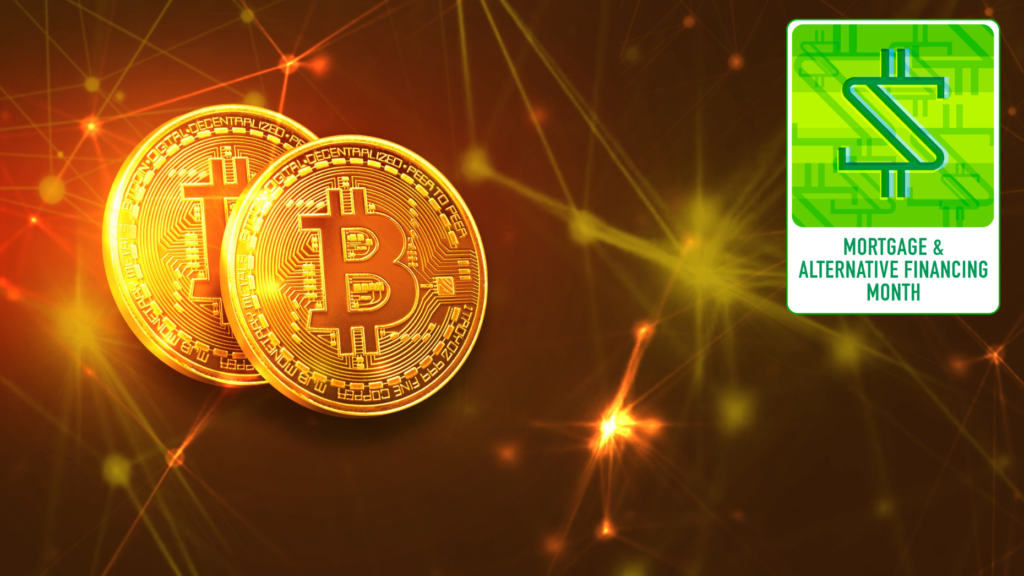All June long we’re going deeper on mortgage and title — looking at where the mortgage market is headed, how products are evolving and alternative financing options changing the game. Join us for Mortgage and Alternative Financing Month. And subscribe to Inman’s Extra Credit for weekly updates all year long.
Picture this. You are a real estate agent in 1996. You’ve been hearing about this new thing called the internet and the world wide web. You don’t pay much attention to the constant drip of stories, but eventually, you realize the Internet isn’t going away, and you should understand what the internet is and how it’s relevant to your world.
Crypto Corner explains the foundational concepts and highlights the top crypto news. This week’s Crypto Corner explains bitcoin and blockchain.
To understand how it can be applied to real estate, it’s also essential to understand how crypto works, its history, how the regulators are treating it and who are the industry influencers. So grab my hand, and let’s jump down the crypto rabbit hole. We’ll start with bitcoin and blockchain.
We are on the cusp of another revolution.
Real estate agents are now learning about cryptocurrency, bitcoin, NFTs, crypto mining and even virtual real estate. What is all this stuff and how will it change your life as an agent?
You want to gain a basic understanding, but you don’t know where to begin and how to keep up. I felt the same way. The crypto space is evolving, and its impact on real estate, business, finance and governments may be more significant than the Internet.
When I began to pay attention
After the well-known digital artist Michael Winkellmann, known as Beeple, sold a digital picture in an NFT (non-fungible token) for $69 million at a Christie’s auction on March 11, 2021, I was intrigued and determined to learn more. I had a selfish reason for wanting to learn more about NFTs. My son, Matt Hopen, was studying art at Pratt Institute and I wondered how the financial opportunities for artists would be changing.
Educating myself about NFTs led me to blockchain, cryptocurrency, and unusual concepts that stretched my mind — stable coins, DeFi (decentralized finance), DAOs (decentralized autonomous organizations), and the metaverse. The more I learned, the more I realized how little I knew. Eventually, the conceptual puzzle pieces started to form an image. Not a static picture, but a slow-moving video.
Bitcoin and blockchain
On October 31, 2008, Satoshi Nakamoto published a whitepaper announcing the creation of bitcoin, a new monetary instrument. “A purely peer-to-peer version of electronic cash would allow online payment to be sent directly from one party to another without going through a financial institution.”
No need to use a bank, Paypal or Venmo. Bitcoin would be sent from person to person. It would be faster, more secure and cheaper.
To understand how Bitcoin is transacted, it’s helpful to compare it to email.
Anyone can send you a message and attach data with an email address. However, only you can open the email and access the data because you have a password. When you own bitcoin, you also get an address. This is your public key. Others can send BTC to your public key. You also have a private key, which is your password. This gives you exclusive access to your BTC account or wallet.
In addition to having value as a currency, bitcoin is also a “store of value” like gold because its supply is limited. Only 21 million BTC will be created. The market cap of Bitcoin and the other cryptocurrencies is $1.26 trillion.
Bitcoin and other cryptocurrencies are kept on a decentralized ledger referred to as the blockchain.
Start with a spreadsheet in Excel or Google Sheets to understand blockchain. You probably keep a spreadsheet to manage your business or personal expenses. It’s a great tool for one person or a small group of people.
When there’s a large amount of data that needs to be accessed by multiple users, a database is required. A database usually structures its data into tables. A blockchain behaves differently. Data is gathered in groups or blocks. A block has a limited storage capacity and when the block is full, it is closed.
It is then linked to the previously filled block. This continues, and a chain of blocks are linked together — brilliantly referred to as the blockchain.
One superpower of the blockchain is that the data cannot be changed or deleted. It is immutable.
Here’s how that works
A blockchain doesn’t live on a single server farm in a warehouse. The blockchain data is spread out among many network “nodes” throughout the world. The bitcoin blockchain has over 15,000 nodes across the globe.
Spreading out the data allows for redundancy. Unlike a company that stores all its data in one location, the blockchain isn’t impacted if a power outage or natural disaster occurs at a network node. It also ensures that the data isn’t changed. If someone running a node is a bad dude (yes, some hackers aspire to steal bitcoin) and alters data on their node, the other nodes in the blockchain will not be impacted.
Blocks are stored linearly and chronologically. It’s an ingenious way to keep records. Property records in county recorders’ offices are ripe candidates for blockchain.
Remember to consult experts and trusted financial advisors before venturing into new investment adventures.
Crypto-savvy home sellers and buyers will be drawn to agents who understand crypto and how it can be used in real estate transactions. Educate yourself and become the leading crypto agent in your market.
Rich Hopen is an agent in the CØMPASS Short Hills, NJ office and writes a weekly newsletter Crypto News for Realtors. Follow him on Twitter.



 Are You Interested in West Eleventh Residences Miami?
Are You Interested in West Eleventh Residences Miami? Are You Interested in ONE Park Tower by Turnberry?
Are You Interested in ONE Park Tower by Turnberry? Are You Interested in Diesel Wynwood Condominium?
Are You Interested in Diesel Wynwood Condominium? Are You Interested in Five Park Miami Beach?
Are You Interested in Five Park Miami Beach? Are You Interested in Cipriani Residences Miami?
Are You Interested in Cipriani Residences Miami? Are You Interested in Bentley Residences Miami?
Are You Interested in Bentley Residences Miami? Are You Interested in Baccarat Residences Brickell?
Are You Interested in Baccarat Residences Brickell? Are You Interested in Aria Reserve Miami?
Are You Interested in Aria Reserve Miami? Are You Interested in 888 Brickell Dolce & Gabbana | Miami?
Are You Interested in 888 Brickell Dolce & Gabbana | Miami? Are You Interested in 600 Miami WorldCenter?
Are You Interested in 600 Miami WorldCenter? Are You Interested in HUB MIAMI RESIDENCES?
Are You Interested in HUB MIAMI RESIDENCES? Are You Interested in WALDORF ASTORIA RESIDENCES?
Are You Interested in WALDORF ASTORIA RESIDENCES?